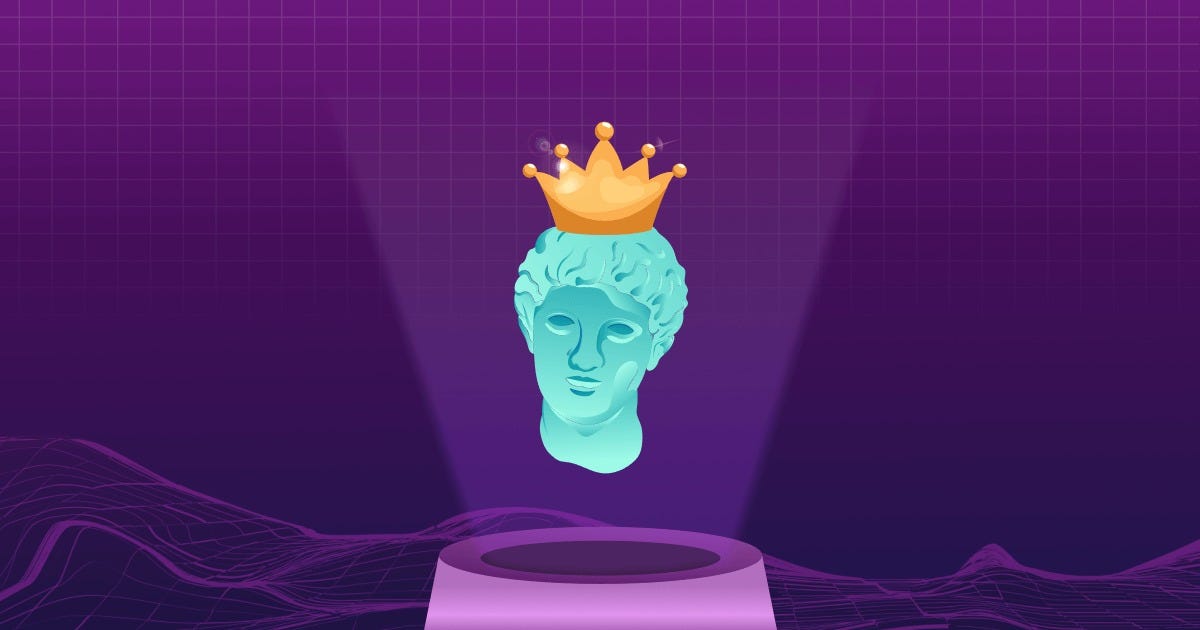
Imagine a world where artists are fairly compensated for their digital creations. A world where every time a piece of art is sold or shared, the artist receives a royalty payment. This is the concept behind digital art royalties, a topic that has sparked a fascinating conversation about the value of digital art and the future of the art market. As the digital art market continues to expand and evolve, it is crucial to explore the potential benefits and challenges of implementing a royalty system for digital artists. In this article, we will delve into the value of digital art royalties and the impact it could have on the art world as a whole.
Understanding Digital Art
Definition of digital art
Digital art refers to artwork that is created or presented using digital technology. It involves the use of computer programs, digital tools, and software to create, manipulate, and showcase artistic creations. This can include various forms of visual art, such as paintings, illustrations, sculptures, and mixed media, as well as multimedia installations, virtual reality experiences, and interactive artworks.
Evolution of digital art
Digital art has come a long way since its inception in the late 20th century. It emerged as artists began exploring the creative possibilities offered by computers and technology. The evolution of digital art can be traced back to the early experiments in computer-generated images and graphics during the 1950s and 1960s. As technology advanced, so did the tools and techniques available for artists to express themselves digitally.
Popularity of digital art
In recent years, digital art has witnessed a significant surge in popularity. This can be attributed to several factors, including the increased accessibility and affordability of digital tools and software, the growth of social media platforms and online art communities, and the rise of the digital nomad lifestyle. Digital art has also gained recognition and acceptance in mainstream art institutions, galleries, and museums, further contributing to its popularity and cultural relevance.
The Concept of Royalties
Definition of royalties
Royalties refer to the payments or financial compensation that individuals or entities receive in exchange for the use of their creative or intellectual property. In the context of art, royalties are paid to artists or creators when their artwork is sold, licensed, reproduced, or otherwise utilized for commercial purposes. Royalties serve as a form of recognition and monetary reward for the artistic contributions made by individuals and provide an incentive to continue creating.
Usage in various industries
Royalties are commonly used in various industries, including music, literature, film, and television. For example, musicians earn royalties from the sale and streaming of their music, authors receive royalties from the sale of their books, and actors receive royalties from the distribution of their films or TV shows. The concept of royalties ensures that creators are compensated for their work even after it has been released or sold.
Importance of royalties in art
In the art world, royalties play a crucial role in supporting artists and their creative endeavors. By receiving royalties, artists can earn an ongoing income based on the success and continued use of their artwork. This financial stability allows artists to focus on their craft and invest in further artistic exploration. Royalties also grant artists a sense of ownership and control over their work, ensuring that they are fairly rewarded for their talent and efforts.

The Emergence of Digital Art Royalties
Introduction of digital art marketplaces
Digital art marketplaces have emerged as a popular platform for artists to showcase and sell their digital artwork. These online platforms provide a global reach, connecting artists with collectors and buyers from around the world. The introduction of digital art marketplaces has expanded the opportunities for artists to monetize their work and reach a wider audience.
The need for royalty systems
As the digital art market grew, the need for a reliable and transparent royalty system became evident. Unlike traditional art forms, digital art can be easily reproduced, shared, and sold without the knowledge or consent of the artist. This raised concerns about the fair compensation of artists and the protection of their intellectual property rights. Royalty systems address these concerns by ensuring that artists receive a portion of the proceeds each time their artwork is sold or transferred.
Development of blockchain-based platforms
Blockchain technology has emerged as a promising solution for implementing transparent and secure royalty systems in the digital art world. Blockchain allows for the creation of decentralized platforms that record and verify transactions, ensuring the authenticity and ownership of digital artworks. By utilizing blockchain-based platforms, artists can have greater control over their work, track the sales and transfers of their art, and receive royalties automatically and securely.
Benefits of Digital Art Royalties
Earning potential for artists
Digital art royalties provide artists with a sustainable source of income. By earning royalties from the sale and use of their artwork, artists can generate revenue even after the initial sale. This financial stability allows artists to focus on their creative pursuits without the constant pressure to create and sell new artworks solely for income purposes. The potential for recurring royalties can be particularly beneficial for emerging artists or those who may not have access to traditional art markets.
Sustaining artists’ income
Digital art royalties help bridge the gap between the creation and monetization of artworks. In traditional art markets, artists often face challenges in receiving ongoing income from their work, especially if their artwork is resold or licensed by others. With digital art royalties, artists can continue to earn from the secondary market sales and subsequent uses of their work. This not only sustains their income but also acknowledges the lasting value and impact of their creations.
Incentivizing creativity and experimentation
Digital art royalties can incentivize artists to explore new forms of creative expression and experiment with innovative techniques. Knowing that they will be rewarded for their artistic contributions, artists are encouraged to push boundaries, take risks, and challenge traditional norms. This fosters a culture of innovation and creativity within the digital art community, leading to the development of groundbreaking artworks and immersive experiences.

Challenges and Concerns
Determining fair royalty rates
One of the main challenges in implementing digital art royalties is determining fair and equitable royalty rates. The value of an artwork can be subjective and may vary based on market demand, scarcity, and the reputation of the artist. Establishing standardized royalty rates that adequately compensate artists while still supporting a sustainable art market is a complex task. Striking the right balance requires collaboration between artists, platforms, collectors, and industry stakeholders to ensure a fair and transparent system.
Fraud and copyright infringement
The digital nature of artworks introduces new challenges related to fraud and copyright infringement. Digital art can be easily copied, altered, or distributed without proper authorization, leading to unauthorized use and potential loss of earnings for artists. Implementing robust authentication mechanisms and copyright protection measures is essential to prevent fraud and ensure that artists receive the appropriate royalties for the authorized use of their work.
Lack of established legal framework
The digital art world is still relatively new, and there is a lack of established legal frameworks and regulations specific to digital art royalties. Existing intellectual property laws may not fully address the unique challenges and intricacies of digital art. Developing comprehensive legal frameworks that protect the rights of artists, facilitate royalty collection and distribution, and promote a fair art market ecosystem is crucial for the future of digital art royalties.
Digital Art Royalty Platforms
Overview of leading digital art platforms
Several leading digital art platforms have emerged, providing artists with the opportunity to monetize their digital artworks and earn royalties. Platforms such as SuperRare, Nifty Gateway, and Foundation allow artists to showcase and sell their creations directly to collectors and buyers in a secure and transparent manner. These platforms leverage blockchain technology to track and authenticate digital art, ensuring the integrity and provenance of each artwork.
How royalties are tracked and distributed
Digital art royalty platforms utilize blockchain technology to track the sales, transfers, and usage of artworks. Each transaction is recorded on a decentralized ledger, providing an immutable and transparent record of ownership and royalties. Once an artwork is sold or used, the platform automatically distributes the appropriate royalties to the artist, ensuring a seamless and efficient process. This eliminates the need for intermediaries and ensures that artists receive their royalties in a timely manner.
Unique features and advantages
Digital art royalty platforms offer several unique features and advantages for artists and collectors. These platforms provide a global marketplace for artists to showcase and monetize their work, reaching a diverse audience of collectors and enthusiasts. The use of blockchain technology ensures the authenticity and provenance of digital artworks, creating a sense of trust and transparency for buyers. Additionally, some platforms allow for the fractional ownership of artworks, opening up investment opportunities for collectors and potential royalty earnings for artists.

Implications for Artists and Collectors
Empowering artists financially
Digital art royalties empower artists financially by providing them with a steady income stream. By earning royalties from the sale and use of their digital artworks, artists can support themselves financially, invest in their artistic development, and pursue their creative passions without financial constraints. This financial empowerment enables artists to devote more time and resources to their craft, ultimately leading to the production of high-quality and impactful artworks.
Fostering trust and transparency
Digital art royalties foster trust and transparency between artists and collectors. With the implementation of blockchain technology and decentralized platforms, the authenticity, ownership, and transaction history of artworks can be easily verified. This transparency instills confidence in collectors, knowing that the artworks they are purchasing are genuine and that the artists will be fairly compensated. The trust and transparency afforded by digital art royalties contribute to the growth and sustainability of the digital art market.
Value appreciation for collectors
For collectors, digital art royalties offer the potential for value appreciation over time. As the demand for digital art grows and the reputation of artists increases, the value of their artworks may rise. Collectors who purchase digital artworks and hold onto them can benefit from any future increase in value. Additionally, fractional ownership models offered by some platforms allow collectors to invest in a portion of an artwork, diversifying their art holdings and potentially earning a share of any royalties generated.
Ecosystem Impact
Creating new economic opportunities
Digital art royalties have the potential to create new economic opportunities within the art world. By providing artists with a sustainable income stream, digital art royalties allow artists to pursue their creative endeavors and contribute to the cultural and artistic landscape. This, in turn, generates economic activity and supports the growth of the digital art market. The emergence of digital art royalties has also given rise to new roles and professions, such as curators, blockchain experts, and art advisors, further expanding the job market within the art ecosystem.
Transforming the art market dynamics
Digital art royalties are transforming the dynamics of the art market. Traditionally, the art market has been dominated by intermediaries such as galleries, dealers, and auction houses, who have controlled the distribution and pricing of artworks. With the advent of digital art royalties and decentralized platforms, artists have more direct access to collectors and buyers, bypassing the traditional gatekeepers. This shift in power dynamics allows for greater autonomy and control for artists and creates a more inclusive and diverse art market.
Democratization of art
Digital art royalties are democratizing the art world, making art more accessible and inclusive. By leveraging digital technologies and platforms, artists can reach a global audience, without the limitations of physical location or traditional art market barriers. The ability to earn royalties from digital artworks also provides opportunities for artists from diverse backgrounds, allowing for greater representation and diversity within the art world. This democratization promotes artistic expression, cultural exchange, and the exploration of unique perspectives and narratives.

Legal and Copyright Considerations
Intellectual property rights in digital art
Protecting intellectual property rights in digital art is crucial for ensuring that artists are fairly compensated for their work. Artists hold the copyright to their digital artworks, which allows them to control the reproduction, distribution, and sale of their art. Implementing robust copyright protection measures, such as watermarking, digital signatures, and metadata embedding, helps deter unauthorized use and piracy. Artists should also consider registering their artworks with copyright offices or utilizing blockchain-based platforms to establish a verified record of ownership.
Challenges in enforcing rights
Enforcing intellectual property rights in the digital art space can be challenging due to the decentralized and global nature of the internet. Tracking and identifying copyright infringements, especially in the case of digital reproductions, can be time-consuming and costly. Additionally, jurisdictional issues may arise when dealing with infringing activities that occur across different countries. Collaborations between artists, platforms, and legal experts are essential in developing effective enforcement strategies and protecting the rights of artists in the digital art realm.
Potential solutions and regulations
To address the challenges of intellectual property rights in digital art, various potential solutions and regulations have been proposed. These include the development of international copyright standards specific to digital art, the establishment of specialized legal bodies or arbitration systems to handle copyright disputes, and the implementation of technological solutions such as blockchain-based copyright registries. Collaborative efforts between artists, platforms, lawmakers, and policymakers are necessary to ensure the protection and enforcement of artists’ rights in the digital art landscape.
Future of Digital Art Royalties
Integration with AI and blockchain technology
The future of digital art royalties is closely intertwined with advancements in AI and blockchain technology. AI can play a significant role in automating the tracking and verification of digital art transactions, making royalty distribution more efficient and accurate. Additionally, blockchain technology can enable the creation of decentralized platforms that provide enhanced security, immutability, and transparency for artists and collectors. These technological advancements have the potential to revolutionize the digital art market and further empower artists.
Exploring new business models
The future of digital art royalties will likely see the exploration of new business models that better align with the unique characteristics of the digital art ecosystem. This may include innovative approaches such as subscription-based platforms, where users pay a recurring fee to access a collection of digital artworks and artists receive royalties based on engagement or usage. By diversifying revenue streams and experimenting with alternative models, artists and platforms can adapt to the evolving needs and preferences of the digital art community.
Evolving role in the art world
Digital art royalties are expected to continue to play an increasingly important role in the art world. As digital art becomes more mainstream and widely accepted, the demand for transparent and fair royalty systems will only grow. Artists will rely on digital art royalties as a primary source of income, and collectors will increasingly value the authenticity and provenance of digital artworks. The evolving role of digital art royalties will shape the future of the art market, contributing to its growth, innovation, and economic sustainability.
In conclusion, digital art royalties have emerged as a game-changer in the art world, empowering artists, fostering trust and transparency, and transforming the dynamics of the market. With the advent of digital art marketplaces and blockchain technology, artists now have greater opportunities to monetize their digital artworks and earn ongoing royalties. These royalties provide financial stability to artists, sustain their income, and incentivize creativity and experimentation.
While challenges and concerns exist, such as determining fair royalty rates and addressing copyright infringement, digital art royalties are paving the way for a future where artists can thrive financially and the art market becomes more inclusive, diverse, and democratized. With advancements in technology and the exploration of new business models, the future of digital art royalties looks promising, promising to shape the future of the art world and its economic and cultural impact.
If you found value in this article, please check our post on “ The Art of Stock Photography Selling ”
Tip: These 3 Tools will help you with audience engagement, lead generation, and SEO-Optimization as you build successful business in Digital Arts and earn royalties.
Feel free to use the comment section below to let us know more about your experience and questions. You can also subscribe to our mailing list for exclusive updates and content tailored just for you!”







